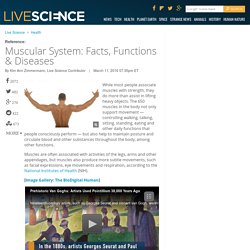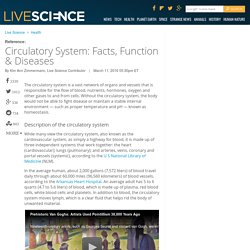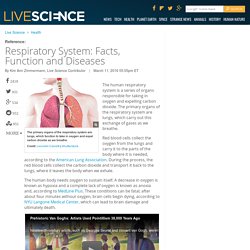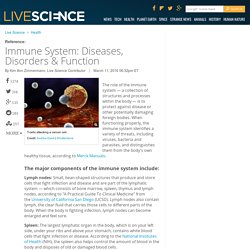

Digestive system. The Integumentary System. The muscular system. Circulatory system. Nervous System. SKELETAL SYSTEM. Integumentary System. Immune System. Respiratory. MUSCULAR SYSTEM. Mariana, Angel V, and Tatum. Immune system. Urinary System. Circlatory system. Respiratory System. Endocrine System - Google Slides. Urinary System :) Movies, quizzes, and health info for kids: KidsHealth.org. Your Digestive System. Urinary System: Facts, Functions & Diseases. The urinary system, also known as the renal system, produces, stores and eliminates urine, the fluid waste excreted by the kidneys.

The kidneys make urine by filtering wastes and extra water from blood. Urine travels from the kidneys through two thin tubes called ureters and fills the bladder. When the bladder is full, a person urinates through the urethra to eliminate the waste. The urinary system is susceptible to a variety of infections and other problems, including blockages and injuries. These can be treated by a urologist or another health care professional who specializes in the renal system. Muscular System: Facts, Functions & Diseases. While most people associate muscles with strength, they do more than assist in lifting heavy objects.

Skeletal System: Facts, Function & Diseases. The adult human skeletal system consists of 206 bones, as well as a network of tendons, ligaments and cartilage that connects them.

The skeletal system performs vital functions — support, movement, protection, blood cell production, calcium storage and endocrine regulation — that enable us to survive. Animals with internal skeletons made of bone, called vertebrates, are actually the minority, as 98 percent of all animals are invertebrates, meaning they do not have internal skeletons or backbones. Human infants are born with about 270 bones, some of which fuse together as the body develops. By the time we reach adulthood, we have 206 bones, according to Arizona State University’s School of Life Sciences. The skeletons of adult males and females have some variation, primarily to accommodate childbirth. Prehistoric Van Goghs: Artists Used Pointillism 38,000 Years Ago [Image Gallery: The BioDigital Human] A typical bone has a dense and tough outer layer.
Circulatory System: Facts, Function & Diseases. The circulatory system is a vast network of organs and vessels that is responsible for the flow of blood, nutrients, hormones, oxygen and other gases to and from cells.

Without the circulatory system, the body would not be able to fight disease or maintain a stable internal environment — such as proper temperature and pH — known as homeostasis. While many view the circulatory system, also known as the cardiovascular system, as simply a highway for blood, it is made up of three independent systems that work together: the heart (cardiovascular); lungs (pulmonary); and arteries, veins, coronary and portal vessels (systemic), according to the U.S National Library of Medicine (NLM). In the average human, about 2,000 gallons (7,572 liters) of blood travel daily through about 60,000 miles (96,560 kilometers) of blood vessels, according to the Arkansas Heart Hospital. Prehistoric Van Goghs: Artists Used Pointillism 38,000 Years Ago [Top 10 Amazing Facts About Your Heart] Ready for Med School? Respiratory System: Facts, Function and Diseases. The human respiratory system is a series of organs responsible for taking in oxygen and expelling carbon dioxide.

Nervous System: Facts, Function & Diseases. The nervous system is a complex collection of nerves and specialized cells known as neurons that transmit signals between different parts of the body.

It is essentially the body’s electrical wiring. Immune System: Diseases, Disorders & Function. The role of the immune system — a collection of structures and processes within the body — is to protect against disease or other potentially damaging foreign bodies.

When functioning properly, the immune system identifies a variety of threats, including viruses, bacteria and parasites, and distinguishes them from the body's own healthy tissue, according to Merck Manuals. Lymph nodes: Small, bean-shaped structures that produce and store cells that fight infection and disease and are part of the lymphatic system — which consists of bone marrow, spleen, thymus and lymph nodes, according to "A Practical Guide To Clinical Medicine" from the University of California San Diego (UCSD).
Lymph nodes also contain lymph, the clear fluid that carries those cells to different parts of the body. When the body is fighting infection, lymph nodes can become enlarged and feel sore. Prehistoric Van Goghs: Artists Used Pointillism 38,000 Years Ago Thymus: This small organ is where T-cells mature. Integumentary System. Introduction The integumentary system consists of the skin, hair, nails, glands, and nerves.

Its main function is to act as a barrier to protect the body from the outside world. It also functions to retain body fluids, protect against disease, eliminate waste products, and regulate body temperature. In order to do these things, the integumentary system works with all the other systems of your body, each of which has a role to play in maintaining the internal conditions that a human body needs to function properly. Google Slides - create and edit presentations online, for free. Search Results - BrainPOP. Human Anatomy and Physiology. Human Anatomy: Learn All About the Human Body at InnerBody.com. How Your Body is Like a Factory. Did you know that you can actually hear pulmonary circulation?

Pulmonary circulation is the movement of blood though the right side of the heart, to the lungs, and then back through the left side of the heart. The “lub dub” you hear when using a stethoscope is the sound of the ventricles contracting and the heart valves closing during this circulation process. Blood takes a very precise route during pulmonary circulation. Two large veins called the vena cavae bring blood to the right atrium of the heart. All Systems Go. Kids' Blog. Dec26 This is the story of George Gershwin, a composer and pianist who wrote one of the most Websites: Dallas Symphony Orchestra: George GershwinPBS American Masters: George Gershwin RememberedLibrary of Congress National Jukebox Audio: Rhapsody in Blue by George Gershwin Part 1 and Part 2 Books: Print This Post Dec21 If you are interested in animals at all or have studied them at school, you are probably familiar with animal camouflage – the ability for an animal to hide itself because its coloring makes it blend in to its environment.

Masters of Disguise is about some animals that take camouflage to the next level. One question I always have is, “how do they do that?” National Geographic: CamouflageHow Do Animals Camouflage? More Books About Animal Camouflage: Print This Post Dec16 The idea that subways exist – train tunnels that run underneath large cities – is amazing even today, when they are commonplace. The Secret Subway tells Mr. How the Body Works Main Page.